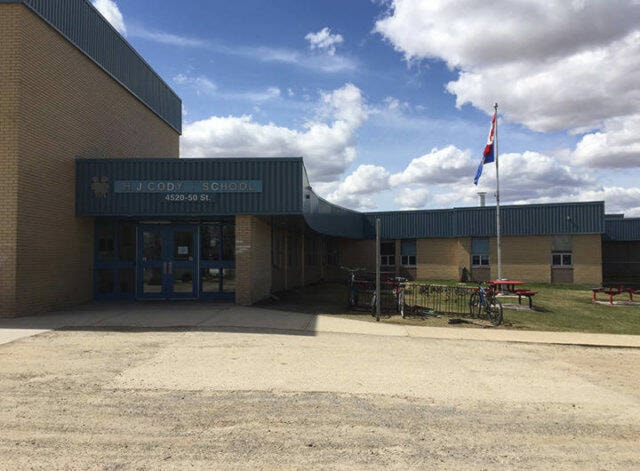Currently, Chinook’s Edge School Division (CESD) students graduate at a rate higher than the provincial average, and the division is working hard to keep those numbers trending upwards.
CESD has a graduation rate of 84 per cent, while the provincial average is 83 per cent. Specifically, HJ Cody School has a graduation rate of 88 per cent.
“Our high school completion rates are part of our career connections goal in CESD,” said Jason Drent, associate superintendent of learning services for the division. “This is an important metric we use to inform us how our work is going.”
Career connections is the concept of supporting students in making a plan to go from grade 12 to the world of work, said Drent, and providing students with experiences and a pathway towards their career goals.
“High school completion is an important metric,” Drent said. “We know it’s such an important stepping stone into post-secondary education.”
Because the data is collected and analyzed after diploma exams are completed, these numbers reflect the graduation rates for the 2021/2022 school year.
“What’s really compelling about the data, for us, is remember that over the course of the last two years, we’ve been in a pandemic,” said Drent. “So to continue that success is something we’re really proud of.”
Drent said the separation in high school completion rates between the division’s highest and lowest performing schools has never been smaller.
“That’s exciting, from our standpoint,” he said. “This means our high-leverage practices are effective.”
To ensure as many students as possible complete high school, the division has several programs in place, which appeal to students with varying talents and goals.
“One of our biggest high-leverage practices is we identify those students early on, in grade 8 or 9, where we need to really provide some engagement,” said Drent. “We really want to identify where we can get some excitement and purposeful connection, that relevance to what they’re doing.”
Drent said regardless of what comes after high school, there is always that next step in education, whether it’s formal post-secondary education or learning on the job, and they want their students to recognize that.
The career connections goal is a kindergarten to grade 12 initiative, Drent said. For middle school students, Drent said the focus is on helping students figure out who they are as a learner and what interests them.
“This provides more relevance to why they’re here and doing what they’re doing,” he said.
For younger students, Drent said the schools focus on experiences – the world beyond the school and what work means.
Dual credit programs are another avenue to help students plan their lives after high school.
“Even five years ago, we didn’t have all of our schools participating,” Drent said of the dual credit program. “Now all of our schools are participating.”
CESD currently partners with Red Deer Polytechnic and Olds College, as well as several other institutions across the province, and Drent said the division is always looking for ways to increase those connections.
“Another good example is that we have a career connection team in every single high school now,” said Drent. “This is a school administrator, a guidance counsellor and a career counsellor, and they help to engage students and create a post-secondary plan.”
Drent even just 10 years ago, graduation rates in Alberta were very, very low.
“To be at this level now is so exciting,” he said. “It shows what we’re doing is working. In our rural communities in particular, we’ve seen a real commitment to completing high school.”
While high school completion rates are at an all-time high, Drent said the division still has some work to do when it comes to students enrolling in post-secondary school.
“When it comes to post-secondary transition, we are below the provincial average,” he said, adding that the provincial average for students attending post-secondary school three years after grade 10 is 60 per cent. CESD currently sits at 54 per cent.
However, three years after grade 12, CESD is on par with the provincial average when it comes to students enrolling in post-secondary school.
“Sometimes it’s a bit of a jump for some of our rural students to make that leap to the big city and a big post-secondary institution,” Drent said. However, the school division is working to help students understand what’s out there for them, such as university, college or certification programs.
“It’s exciting work. It’s lifechanging work,” said Drent. “And it’s something that we are really excited about in CESD. We’re confident we’re going to continue seeing growth in that area. It’s really about collective responsibility in getting kids to that goal and encouraging kids to keep those doors open.”
